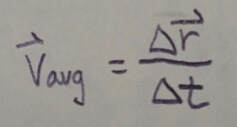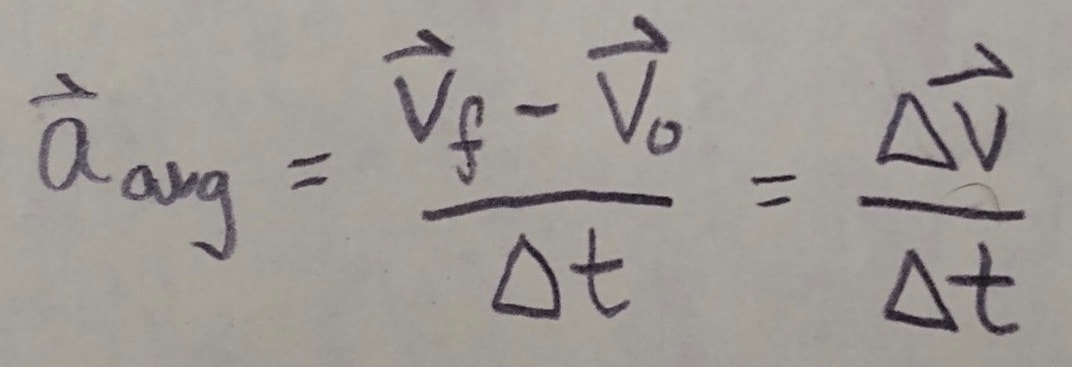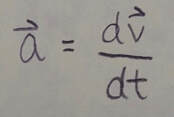Motion in Two and Three Dimensions
|
Position Vector: The location of a particle relative to the origin of a coordinate system is given by a position vector r, which in unit-vector notation is:
Here x i-hat, y j-hat, and z k-hat are the vector components of position vector r, and x, y, and z are its scalar components (as well as the coordinates of the particle). A position vector is described either by a magnitude and one or two angles for orientation, or by its vector or scalar components.
Displacement: If a particle moves so that its position vector changes from original r to final r, the particle's displacement, delta r is:
The displacement can also be written as:
Average Velocity and Instantaneous Velocity: If a particle undergoes a displacement delta r in time interval delta t, its average velocity v(sub)avg for that time interval is:
As you shrink time to zero, average velocity reaches a limit called either velocity or instantaneous velocity v:
which can be written in unit-vector notation as:
where v(sub)x = dx/dt, v(sub)y = dy/dt, and v(sub)z = dz/dt. The instantaneous velocity v of a particle is always directed along the tangent to the particle's path at the particle's position.
Average Acceleration and Instantaneous Acceleration: If a particle's velocity changes from original velocity to final velocity in time interval delta t, its average acceleration during the time interval is:
As the time interval is shrunk to zero, average acceleration reaches a limiting value called either acceleration or instantaneous acceleration a:
In unit-vector notation,
where a(sub)x = dv(sub)x/dt,
a(sub)y = dv(sub)y/dt, and a(sub)z = dv(sub)z/dt. |
Projectile motion: Projectile motion is the motion of a particle that is launched with an initial velocity v(sub)0. During its flight, the particle's horizontal acceleration is zero and its vertical acceleration is free-fall acceleration, -g. (Upward is taken as a positive direction). If v(sub)0 is expressed as a magnitude (the speed) and an angle, theta (measured from the horizontal), the particle's equations of motion along the horizontal x axis and vertical y axis are:
The trajectory (path) of a particle in projectile motion is parabolic and is given by:
if x(sub)0 and y(sub)0 of the above top two equations are zero. The particle's horizontal range R, which is the horizontal distance from the launch point to the point at which the particle returns to the launch height, is:
Uniform Circular Motion: If a particle travels along a circle or circular arc of radius r at constant speed v, it is said to be in uniform circular motion and has an acceleration a of constant magnitude:
The direction of a is toward the center of the circle or circular arc, and a is said to be centripetal. The time for the particle to complete a circle is:
T is called the period of revolution, or simply the period, of the motion.
Relative motion: When two frames of reference A and B are moving relative to each other at constant velocity, the velocity of a particle P as measured by an observer in frame A usually differs from that measured from frame B. The two measured velocities are related by:
where v(sub)BA is the velocity of B with respect to A. Both observers measure the same acceleration for the particle:
|
Files:
| APCM Chapter 4 Presentation | |
| File Size: | 6337 kb |
| File Type: | ppt |















